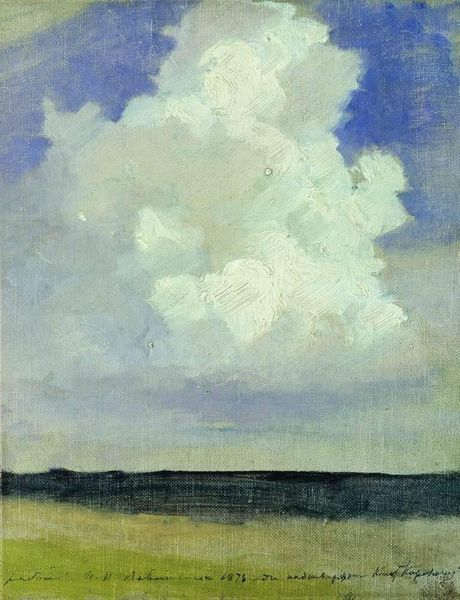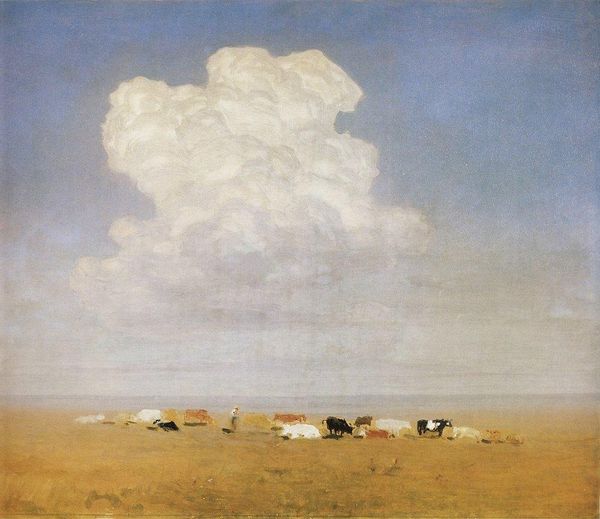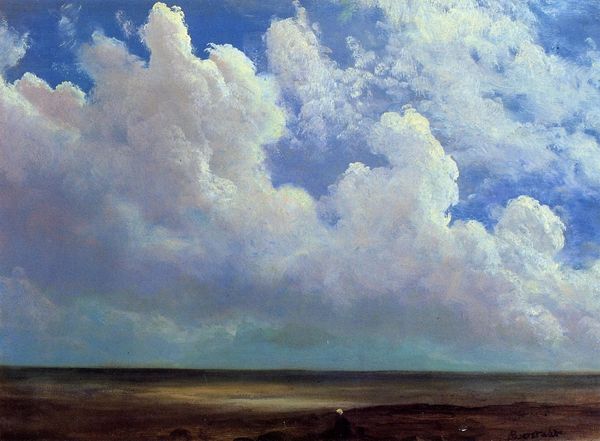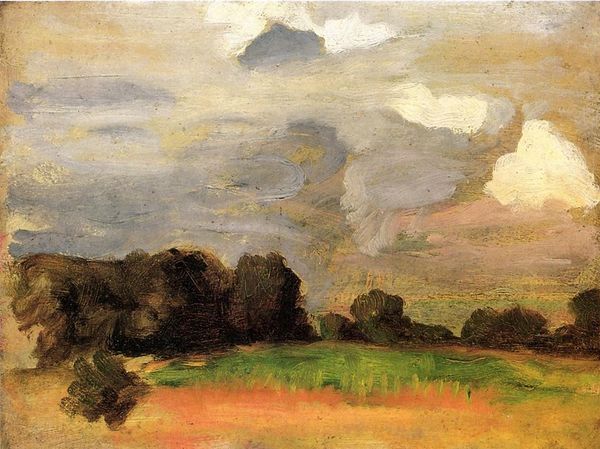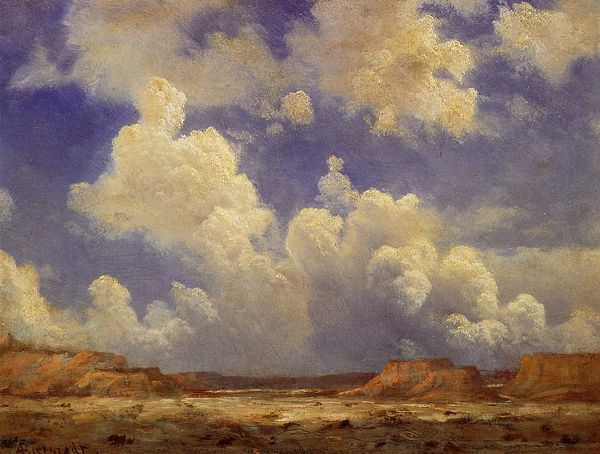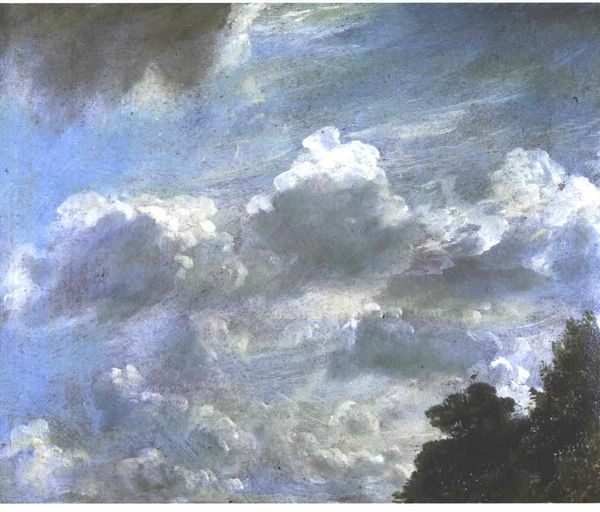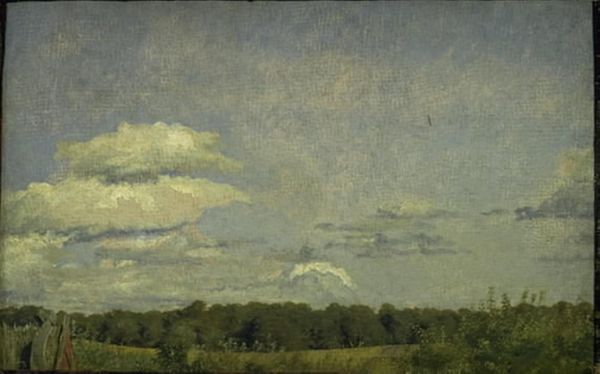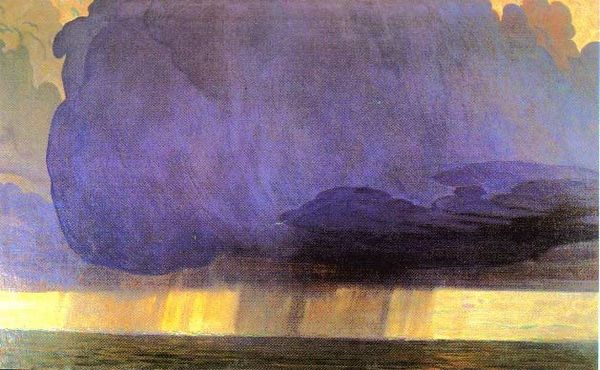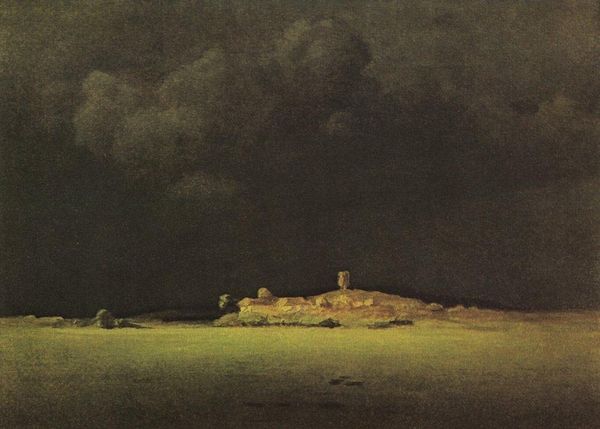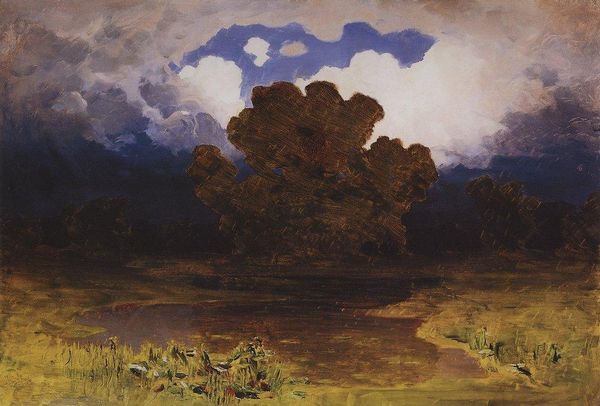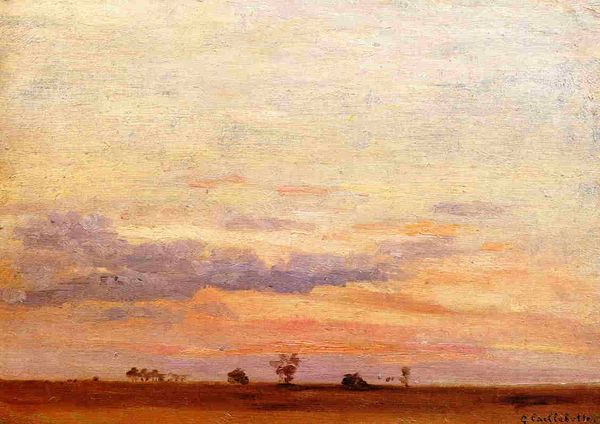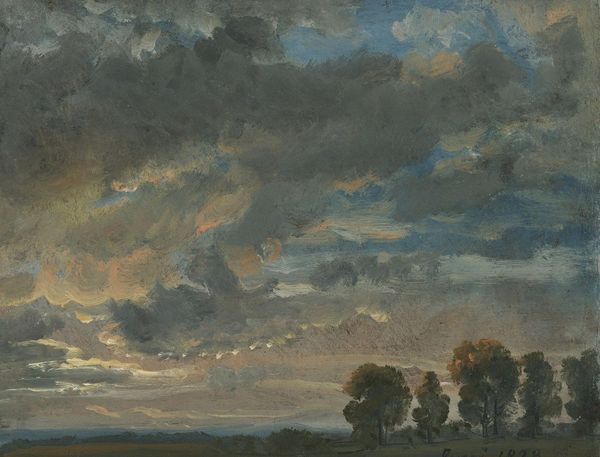
Dimensions: 26.2 x 35.8 cm
Copyright: Public domain
Curator: The painting before us is Isaac Levitan's "Before the Storm," created in 1890. Painted en plein air with oil, it captures a looming sky. Editor: It feels oppressive, almost biblical in its scale. The heavy clouds dominating the canvas create this sense of impending dread. I'm struck by how such a simple scene evokes such a powerful emotional response. Curator: It's the manipulation of materials, really. Levitan's brushstrokes capture the fleeting moment, a hallmark of Impressionism but with a uniquely Russian sensibility. The texture of the clouds, created with layers of oil paint, speaks to his mastery over his craft. He elevates what would be an everyday scene into high art. What do you make of that band of gold on the horizon? Editor: To me, it speaks of hope, perhaps even resistance. Considering Russia’s socio-political climate at the time – late Tsarist period, increasing peasant unrest – the impending storm may reflect broader societal tensions. The contrast between the golden light and the darkness above suggests a struggle. Curator: Fascinating how you contextualize it. I lean towards seeing the process, how that light reflects back up onto the belly of the clouds. Levitan understood light so well, and how the atmosphere itself changes the experience. His commitment to painting on location meant wrestling with the elements to translate the land into paint on canvas. Editor: True. It’s important not to romanticize the process too much though; accessing materials, exhibiting, even existing as a Jewish landscape painter in late 19th century Russia wasn’t neutral. These practical realities inevitably informed what he was creating and why. Curator: Yes, I agree that to detach artistic creation from the social realities surrounding is, frankly, irresponsible. Editor: Indeed. Levitan's “Before the Storm” provides a powerful lesson for considering how grand landscape paintings reflect both the specific historical circumstances of their creation and can also symbolize nature's ability to dwarf humanity's achievements. Curator: And as such it invites a profound understanding and renewed appreciation for both art history and artmaking within our current global challenges.
Comments
No comments
Be the first to comment and join the conversation on the ultimate creative platform.

